Tea and chocolate
An exercise matching tea and chocolate. Can this work at all? Isn’t chocolate too powerful to have with tea? I try some artisanal chocolate pralines with green, oolong, black and puer tea.
An exercise matching tea and chocolate. Can this work at all? Isn’t chocolate too powerful to have with tea? I try some artisanal chocolate pralines with green, oolong, black and puer tea.
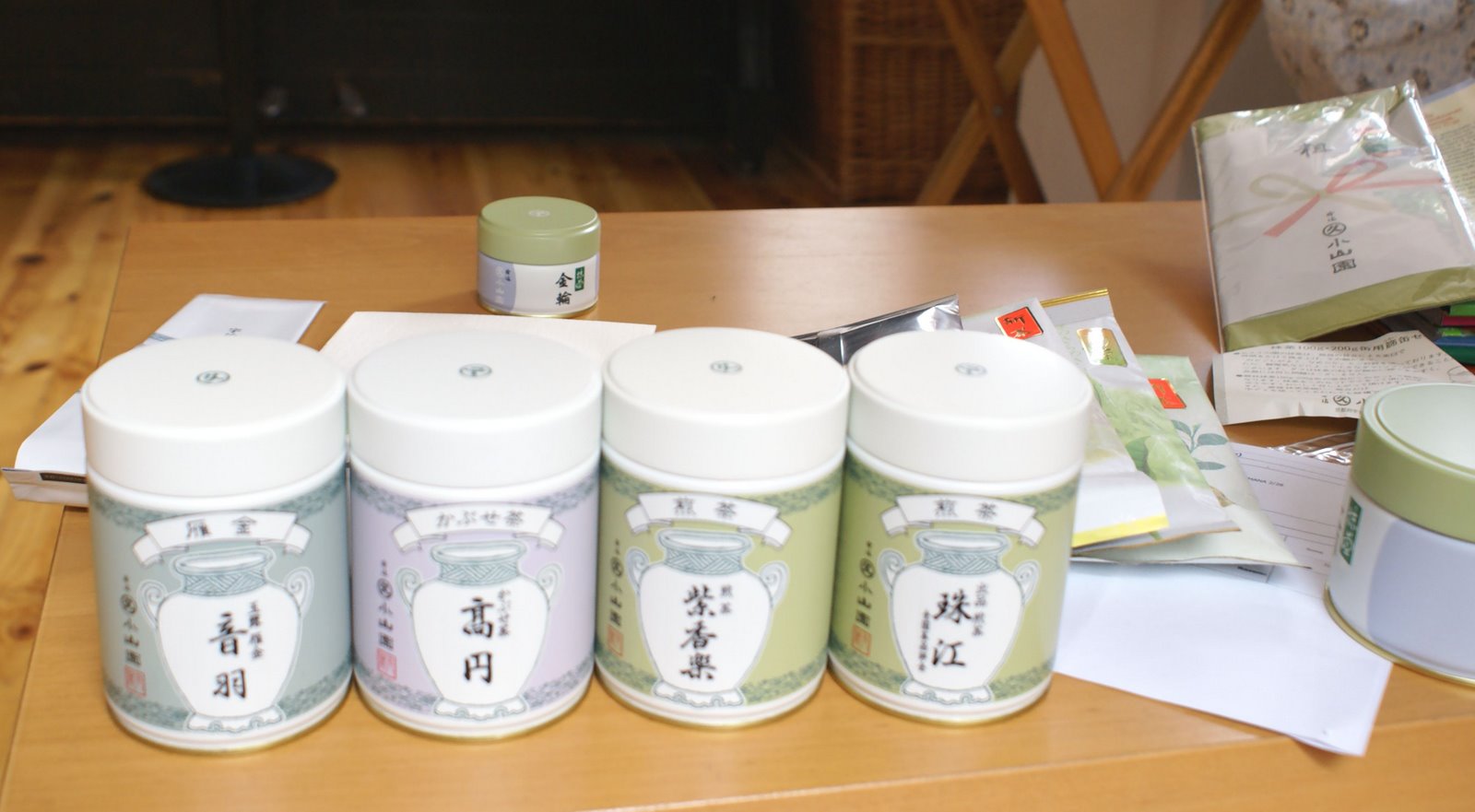 By pure coincidence (well, a polite way to thank Polish Mail for holding packages for two weeks for ‘customs inspection’) I’ve received no less than four shipments of tea today. Now this is real embarras de richesse! My Japanese 2009s are here (tins on the photo above are from Marukyu-Koyamaen and there’s another box from O-Cha; I must praise the latter’s service as they’ve replaced an order that went missing, free of charge on EMS) and I’ll dedicate a series of future posts of various shinchas and gyokuros from these two vendors.
By pure coincidence (well, a polite way to thank Polish Mail for holding packages for two weeks for ‘customs inspection’) I’ve received no less than four shipments of tea today. Now this is real embarras de richesse! My Japanese 2009s are here (tins on the photo above are from Marukyu-Koyamaen and there’s another box from O-Cha; I must praise the latter’s service as they’ve replaced an order that went missing, free of charge on EMS) and I’ll dedicate a series of future posts of various shinchas and gyokuros from these two vendors.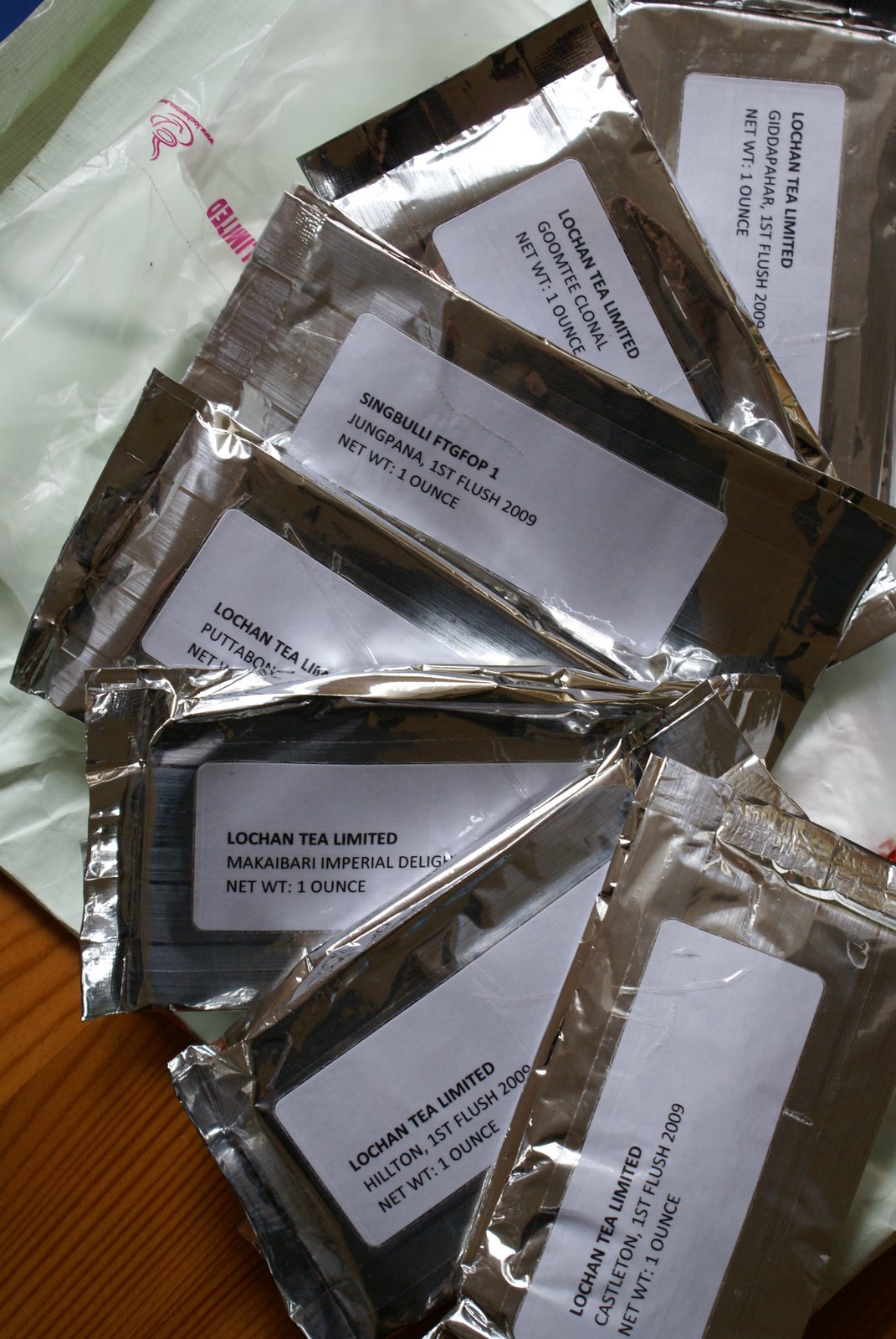
By contrast I’ve also ordered a box of various aged puer samples from Nadacha (and some excitingly affordably yixing clay jars):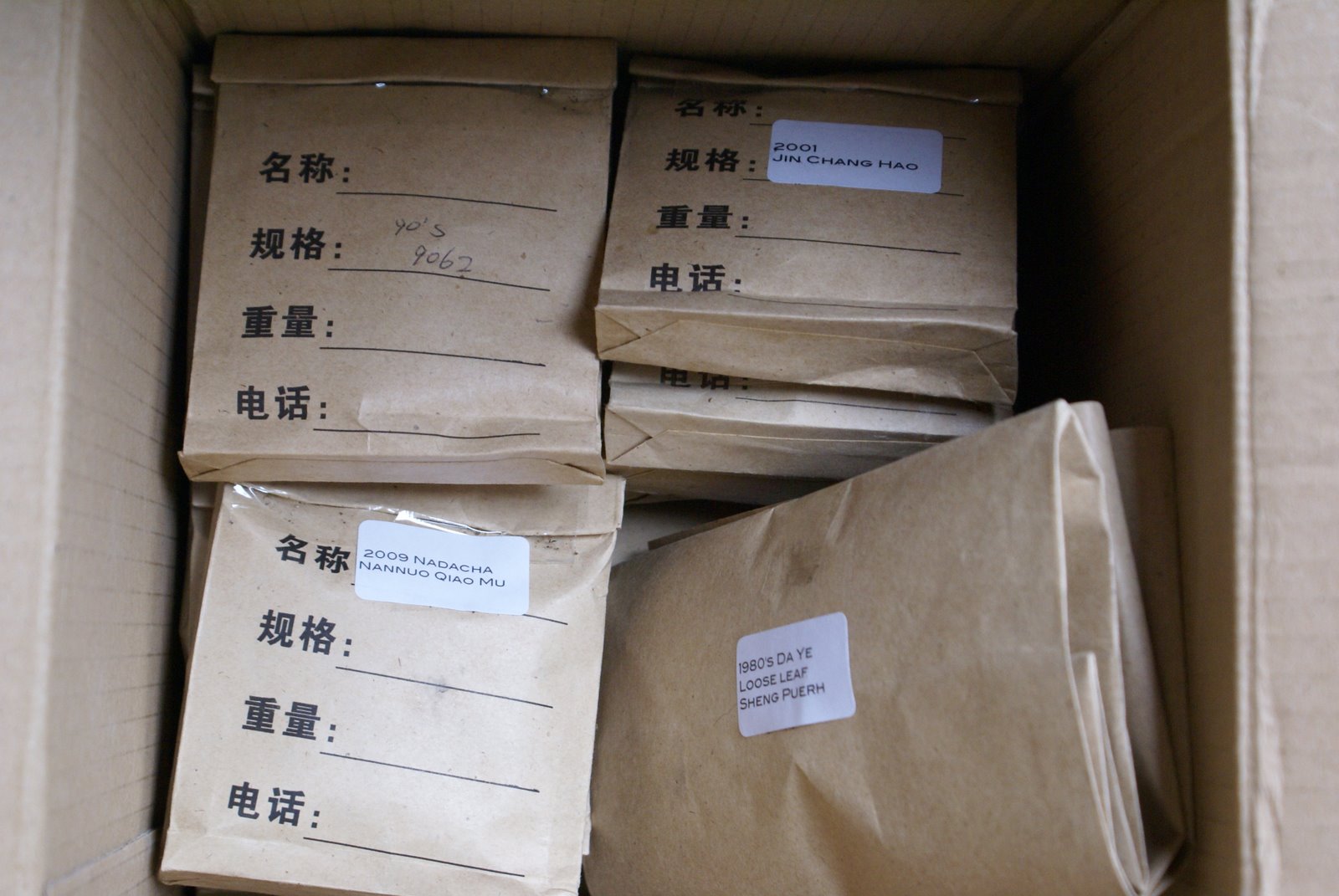
I’ve started the exploration with a black tea from Nada:
The 2009 Fengqing Wai Shi Li is a high-grade spring flush from the Fengqing Tea Factory (and more specifically their Dianhong brand) who are classic producer of both black tea and (more recently) puer. It’s fairly inexpensive at £6 / 100g, and I also very much like Nada’s wabi-sabi packaging:
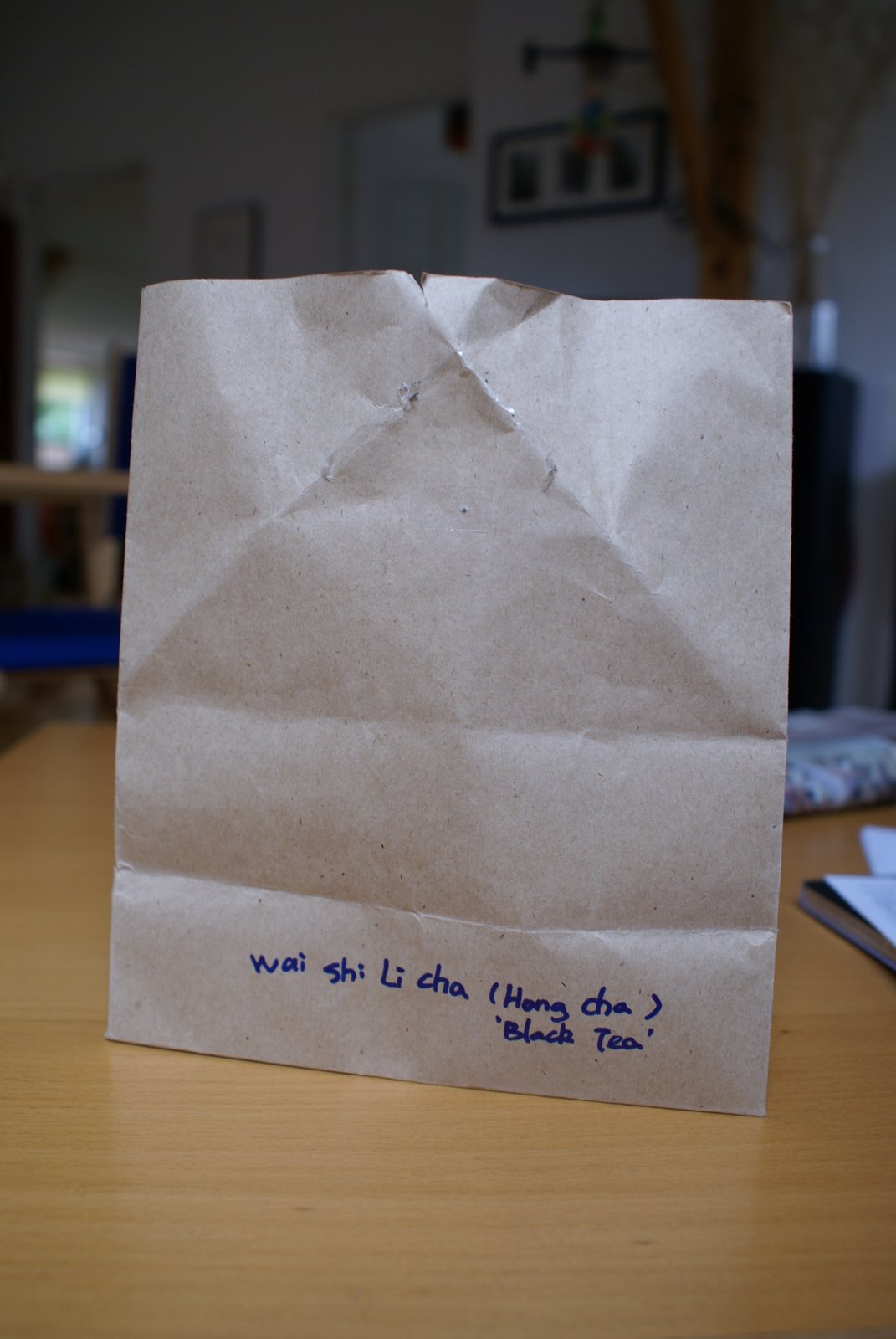
Brewed in: gaiwan
Dosage: 3g/140ml
Dry leaf: Rather small leaves with a degree of golden tips but overall colour is darkish. Aroma is typically Yunnan and very hongcha: earthy, herby, rather unfruity, not terribly complex or deep; perhaps a bit of smokiness. No increase in intensity as the leaf is warmed.
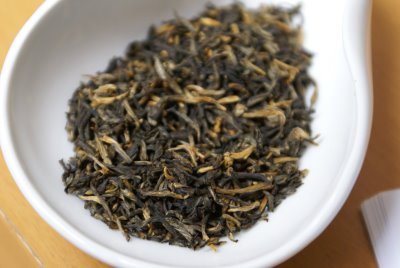
Tasting notes:
45s: The profile of this brew is best described as ‘traditional’. It has a subdued aroma dominated by earth and smoke, with no fruit frills. The nose might be unremarkable but the flavoury is very good, with medium body and a less oblivious oxidation than I expected from the nose. Hardly a lot of complexity or poise but this is good for the price. I might have been just lucky with the brewing parameters as this is showing a perfect balance of tannins and body. Really quite traditional: rather solid and oxidised, less fruity than many modern examples of black Yunnan but more consistent and solid.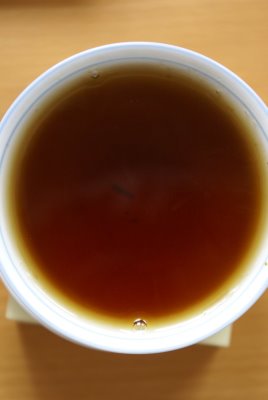
Overall this is satisfying tea for the price. Another good buy from Nada! This also makes me curious about the
other 2009 Fengqing black that he’s offering.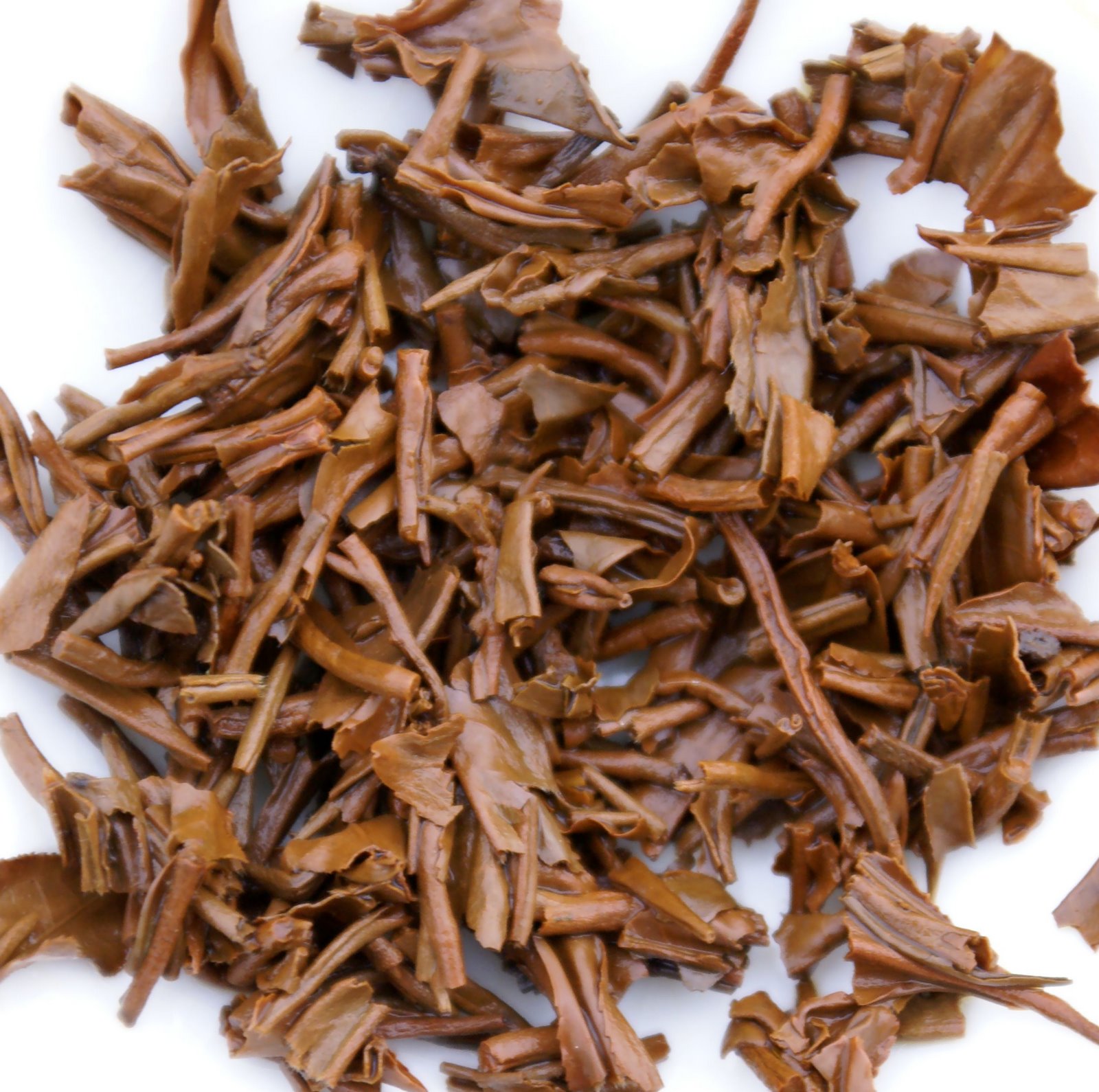
With the fall of Communism here in 1989, tea became a commodity governed by market forces. Standards fell as teabags came into fashion. There was so little interest in the watery brew they generated that I gave up tea altogether. It was only in 1996 or 1997 that I came back. By then, a couple of specialist tea merchants were operating in Warsaw. They had perhaps 75 varieties of loose leaf on offer. Today, I wouldn’t give a penny for that no-name TGFOP Assam sitting next to a strawberry-scented Gunpowder, but at the time it was a massive change.
‘Black’ (now sometimes defined as ‘red’ following the Chinese nomenclature) tea constituted 75% of my early tea consumption, and I had two favourites: Yunnan and Keemun. The former’s red-fruity, crisp taste on sunny days and the latter’s malty depths on rainy ones.
So it was a kind of sentimental journey to order the 2008 Haoya ‘A’ Keemun ‘Nonpareil’ from
Dragon Tea House. This pricy tea ($24 / 100g) is the highest grade of black offered by this merchant (Haoya being a top grade of Keemun and A the highest quality of Haoya).